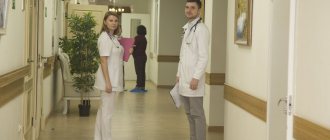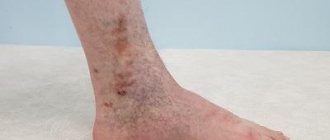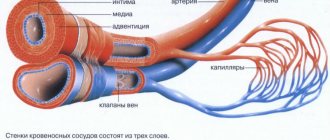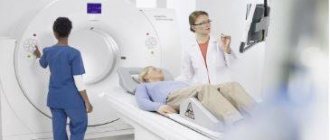Life after surgery
Recommendations for patients after radiofrequency catheter ablation of atrial fibrillation (AF):
- Observation by a cardiologist (therapist) at the place of residence;
- Limiting physical activity for 2 weeks;
- Control of daily monitoring of ECG (CMECG), echocardiography after 3 months at the place of residence;
- Taking Warfarin or new oral anticoagulants (Pradaxa, Xarelto, Eliquis) for at least 3 months, possibly up to 6-12 months, with a permanent form of AF - lifelong use;
- Taking antiarrhythmic drugs (AAP) for at least three months;
- If paroxysmal AF occurs, call an ambulance 03, take an ECG;
- After surgical treatment of AF, the effectiveness of the operation is not assessed for three months. At this time, sensations of interruptions in the work of the heart, discomfort, and possible rhythm disturbances may persist. In 10-15% of patients, AF paroxysms persist after three months; a repeat consultation with an arrhythmologist may be required to decide whether a repeat procedure is necessary.
What is radiofrequency ablation (RFA)?
Rehabilitation after radiofrequency treatment takes place in record time: within 1-2 weeks (as opposed to 1-2 months when using other techniques). This is due to the peculiarities of the technique, which made it possible to almost completely eliminate the surgeon’s error.
During radiofrequency ablation, the doctor inserts a catheter into the affected vessel, which has a built-in radiofrequency waveguide. Under the influence of a radio signal, the walls of the vein heat up, causing the vein to spasm and collapse . Over time, the collapsed vein grows with connective tissue and disappears without a trace.
The operating time and intensity of the radiofrequency signal are determined by the generator to which the catheter is connected. Since the device “focuses” on the temperature inside the vein, this eliminates overheating and damage to the soft tissues surrounding the vein. That is why the postoperative period after RFA proceeds quickly and almost without complications.
Antiarrhythmic therapy before and after invasive treatments for atrial fibrillation.
Oksana Mikhailovna Drapkina , professor, doctor of medical sciences:
- Tarasov Alexey Vladimirovich. "Antiarrhythmic therapy before and after invasive treatments for atrial fibrillation."
Alexey Vladimirovich Tarasov , Candidate of Medical Sciences:
– Good afternoon, dear colleagues. I want to discuss a very interesting, very relevant issue - management tactics before and after various invasive methods of treating atrial fibrillation. Today, the point of application of radiofrequency ablation for the treatment of atrial fibrillation is being discussed at all international Russian sites. But for some reason they very much forget how to manage patients after radiofrequency ablation, although there are more and more such patients. And sometimes we don’t know how to do this, what to do with these patients, because a number of quite serious debatable questions arise and even sometimes anti-advertising questions, because patients come after, for example, isolation of the mouth of the pulmonary veins, but with a number of unanswered questions. And how to conduct them, what we have today, what our experience is, I will try to present to you.
Today, the treatment of paroxysmal atrial fibrillation is, of course, antiarrhythmic therapy and some invasive treatment methods. The main invasive treatment for atrial fibrillation is catheter radiofrequency ablation of the pulmonary veins. Basically, antral ablation of the mouth of the pulmonary veins is now performed. The main indication for radiofrequency ablation of the pulmonary vein ostium is symptomatic paroxysmal atrial fibrillation that is resistant to at least two antiarrhythmic drugs. Currently, it is being discussed whether to use one antiarrhythmic drug or at least two antiarrhythmic drugs. But for now, you should give your patient at least two antiarrhythmic drugs; if they do not work, only then decide on the treatment of atrial fibrillation using the catheter ablation method.
It is also very important to note that such patients should be without organic pathology of the heart, because patients with organic pathology of the heart have other mechanisms, not necessarily ectopy from the mouths of the pulmonary veins, processes in the atrial tissue are already involved here, and in such patients radiofrequency ablation will either ineffective, or 50/50.
What do we have after radiofrequency ablation? The postoperative period can be divided into three periods. The first period is three months, called the early postoperative period, some call it the blind postoperative period. This is the most problematic period because both recurrences of old atrial fibrillation and recurrences of new atrial tachyarrhythmias occur, and I will explain why later. And in the third month we must decide what to do next. This is followed by an immediate postoperative period of three to twelve months of observation. And after twelve months - the late postoperative period.
What problems await us in the early postoperative period? First of all, the most unpleasant thing is that 15% of patients referred for invasive treatment of atrial fibrillation feel even worse in the first two to three months. And this is the question of so-called anti-advertising. The doctor who referred the patient for radiofrequency ablation therefore receives this patient after one or two weeks, and the patient tells him: “Doctor, I feel worse.” Indeed, 15% of patients experience some kind of deterioration after radiofrequency ablation. And this deterioration is due to the fact that 45% - 50% experience atrial tachyarrhythmias. And now we are already saying that if you take all these atrial tachyarrhythmias, atrial fibrillation returns in 50%, relapses, early relapses, and 50% new regular atrial tachycardias. And the most unpleasant thing is that it is new atrial tachycardias that constitute the difficulty in therapy, in diagnosis, because underneath they can lie left atrial flutter, atrial tachycardias - ectopic, which are very difficult to respond to drug therapy.
And here is an example of a cardiogram, which shows left atrial atrial flutter in the early postoperative period. Previously, we saw practically little left atrial flutter at all. And it was after radiofrequency ablation that these paroxysms began to appear, which sometimes cause us quite difficulties in choosing treatment tactics. And here is an example of such an unstable paroxysm of atrial tachycardia, which is continuously recurrent; sometimes they occur in such patients precisely in the early postoperative period.
What is the problem with the early postoperative period? First of all, these relapses are associated with an inflammatory reaction caused by thermal damage to the atrial tissue. We must also not forget about the autonomic nervous system. The fact is that the inner surface of the heart does not have pain receptors, but it has a very powerful autonomic nervous system, and this nervous system is excited. And, of course, as long as inflammation exists, sometimes new atrial tachycardias are launched. And we must not forget about the delayed effect of radiofrequency ablation - the indirect formation of the so-called scar barrier. Because as long as there is an area of inflammation, arrhythmia can be carried out, but when a scar is formed, of course, the protection of the insulation of the mouth of the pulmonary veins is already stronger here.
But early recurrences of atrial fibrillation or new atrial tachyarrhythmias are not such a standard that radiofrequency ablation is ineffective. 60% of patients with early relapses of atrial tachycardia then had clear, stable sinus rhythm, and the procedure was considered effective. Therefore, one cannot assume that if a patient has early relapses of atrial fibrillation or some other atrial tachycardia, this is an ineffective procedure. But in those patients in whom we have complete effectiveness of radiofrequency ablation both in the early and late postoperative period, we will already talk about the absolute effectiveness of radiofrequency ablation. Therefore, there is such terminology as absolute effectiveness and early effectiveness. We are talking about early effectiveness if no attacks occur in the first three months.
What examination methods should be performed in such patients? Collecting anamnesis, identifying symptomatic attacks of arrhythmia. Of course, after radiofrequency ablation, patients are more attentive to themselves and make complaints. Often they may complain of increased heart rate, or even some pain in the heart area. The patient needs to have a 12-lead ECG to determine both cardiac conduction disturbances and arrhythmia disturbances. It is necessary to conduct 1-7 days of Holter ECG monitoring to detect asymptomatic arrhythmias. We recommend Holter monitoring after a month, two, three to evaluate further treatment tactics.
Now there are also such methods as an implantable subcutaneous cardiac monitor, loop cardiac monitors, ECG, which allow monitoring the cardiogram for up to three years. And at each visit, the doctor can take readings and evaluate asymptomatic recurrences of atrial fibrillation.
What are the tactics for managing patients after radiofrequency ablation in the early period? We must decide on antiarrhythmic therapy, the need for antiarrhythmic therapy, and antithrombotic therapy - this is very important, I will say this at the end. And we can use non-drug treatments during the blind period. Transesophageal electrical stimulation is now very actively used to restore new tachycardias, for example, left atrial flutter. And it has recovery efficiency during transesophageal stimulation. If the patient is hemodynamically compromised, we must perform electrocardioversion.
What is the issue of antiarrhythmic therapy in the early postoperative period? Now it is not clear whether these patients need to restore the rhythm or try to maintain sinus rhythm. Because there is no clear concrete data yet on which choice of tactics is better than “ri? The 2007 consensus on catheter-based and surgical ablation of atrial fibrillation considered only amiodarone for management to maintain sinus rhythm. But I absolutely disagree, because we take patients who are quite young, we take patients without organic pathology. And then after radiofrequency ablation, putting him on amiodarone - a toxic drug is absolutely unjustified. Therefore, the 2012 consensus suggests a more expanded list of antiarrhythmic drugs: flecainide, propafenone, sotalol, dofetilide, or dronedarone. But so far there are no clear specific recommendations.
Management tactics are precisely in the third month, when the blind period ends. In the third month, we must clearly understand what to do next with this patient, whether it is necessary to perform repeated radiofrequency ablation. The fact is that repeated radiofrequency ablation is performed quite often (according to many authors, up to 20% to 40%) - in our clinic up to 40%, and this is an absolutely normal tactic for managing patients. But only after the third month, when the inflammation has passed, should we say whether repeat radiofrequency ablation is necessary or not. If we analyze late relapses of atrial tachyarrhythmias, if the patient underwent only one radiofrequency ablation, late relapses occur in 11% - 29% of cases. If the patient has undergone at least two radiofrequency ablations, unfortunately, late relapses still occur (according to different authors, from 7% to 24% of cases).
What are the causes of late relapses of atrial tachyarrhythmias? First of all, this is the resumption of radiofrequency ablation in the area of the mouth of the pulmonary veins, when our isolation began to transmit an impulse. And more often than not, what occurs is the presence of triggers located outside the pulmonary veins. We often refer patients to isolation of the mouth of the pulmonary veins, which cannot be said to be neglected, but when time is running out. And from the source of the mouth of the pulmonary veins, the ectopia descends onto the atrial tissue. We isolated only the mouth of the pulmonary veins, but we cannot isolate all the atria, so, of course, these triggers begin to fire and begin to give late relapses. But I can immediately say that late relapses can be treated quite well with our modern antiarrhythmic therapy.
I would like to present our interesting research, which began back in 2009 at the Moscow Regional Cardiology Center and was further continued at the State Scientific Research Center for PM. This was a pilot project. We examined 134 patients who underwent antral isolation of the mouth of the pulmonary veins. And here are the results we got. Early relapses of atrial tachycardia up to three months occurred in almost 50% of cases. But only about 30% of these patients came to repeat radiofrequency ablation.
The next very important point. In 30% of patients, regular atrial tachycardias predominated, that is, there were quite a lot of regular atrial tachycardias, which sometimes baffled our doctors on how to treat them. And most often left atrial flutter prevailed. And in 20% of cases there were relapses of atrial fibrillation.
These patients were observed for up to 12 months, but we were more interested in the blind period, because we selected different patient management tactics, and one group of patients did not take antiarrhythmic drugs at all. We have now begun to include patients with revili implantation (00:15:58) to exclude asymptomatic relapses of atrial fibrillation, and we already have 39 such patients with implanted monitoring devices, but the study has not been completed, so I cannot tell you the final data.
I would like to say so far based on the results obtained. 36% of patients continue to take antiarrhythmic drugs even after the early postoperative period. And here there is such a thing as the clinical effectiveness of radiofrequency ablation. That is, we reduce the number of attacks of atrial fibrillation by 75%, the patient feels better than before radiofrequency ablation. But radiofrequency ablation does not completely eliminate these attacks. But together with taking antiarrhythmic drugs, the patient is satisfied with this, and attacks are quite rare - two or three times a year, and this suits us.
Today, the most effective antiarrhythmic drug in the postoperative period after three months and after radiofrequency ablation is a class 1C drug - propafenone. But this is greater in patients with recurrent atrial fibrillation. If patients develop new regular atrial tachycardias, then propafenone is often combined with verapamil, or verapamil alone - in such patients it showed good results.
At the end of the presentation, I want to show a few slides about the problems of thromboembolic complications in such patients. It cannot be said that radiofrequency ablation is an absolutely safe procedure, and in 0.6% thromboembolic or cardiogenic strokes occur, and in 1% of cases these are transient ischemic attacks. But today the most discussed issue is the emergence of “silent” ischemic strokes. And some authors write that up to 35% of such patients have “silent” ischemic strokes. What could be the reason for the appearance of such a large number? Not only with thromboembolic problems, but one must understand that the specifics of the radiofrequency ablation procedure and the appearance of air emboli can also make a serious contribution to the definition of “silent” ischemic strokes.
What is the problem of blood clots and thromboembolic complications? 1) This is a large area of damage to the atrial endothelium. 2) Installation of a transseptal introducer and electrode catheters. 3) Atrial stunning is a very important point. This is approximately how during cardioversion the atria are stunned, and all the conditions are created for the formation of blood clots. And this risk of thromboembolic complications directly depends on the score on the CHA2DS2-VASc scale.
And here is an example borrowed from an American journal, an article came out a couple of months ago, where the transesophageal echo data is clearly presented, and we see soft blood clots on the transseptal septum. And the second picture shows charred elements at the end of the electrode after removal from the transseptal septum, which can cause both minor and serious brain disorders. But this is on the one hand, on the other hand you need to understand that there is a problem of thromboembolic complications, but there is also a problem of bleeding. And such a problem as pericardial tamponade occurs from 0.8% to 6% depending on different sources. Vascular complications occur in 0% to 13%. Therefore, on the one hand, we must still prepare the patient with anticoagulants, but on the other hand, understand that there is a risk of bleeding.
Today there is the following tactics. Preparing patients for radiofrequency ablation should be the same as for electrical cardioversion. For patients with atrial fibrillation for more than 48 hours, if we do radiofrequency ablation, it is definitely necessary to do a transesophageal echo, because thrombosis of the left atrial appendage is a contraindication for this procedure. 4-6 hours after radiofrequency ablation, we should start either warfarin or new oral anticoagulants. And, of course, today the use of new oral anticoagulants during radiofrequency ablation is very much discussed. But so far there is no clear data on which of the new oral anticoagulants actually benefits. Cancellation of anticoagulant therapy should be carried out in the second or third month (according to European data in the second month, in the third month - according to Russian recommendations). But if the patient has at least one point on the CHA2DS2-VASc scale. we must continue to place this patient on anticoagulation therapy because we cannot clearly say that this patient will not have late recurrences of atrial fibrillation. With this I want to finish my report. Thank you for your attention.
Are there any restrictions after RFA?
Like any treatment technique, radiofrequency ablation imposes certain restrictions on the patient, but these restrictions are very few. First of all, rehabilitation after RFA includes mandatory wearing of compression stockings for 1-2 weeks. Thus, Intex postoperative compression stockings reduce swelling and help to virtually eliminate the risk of thromboembolism .
Preparation
Radiofrequency ablation of the veins of the lower extremities is a minimally invasive surgical procedure, so before the procedure it is necessary to undergo a number of studies:
- Taking general blood and urine tests;
- Test for syphilis, hepatitis and HIV;
- Ultrasound examination of the veins of the lower extremities.
In addition to taking tests, the patient must follow the following recommendations:
- Tell your doctor about medications you take on an ongoing basis. Some types of medications may be discontinued some time before the upcoming surgery.
- The patient must bring compression garments with him, which will be needed immediately after the operation. The level of compression is determined individually for each patient;
- It is necessary to remove vegetation at the site of the upcoming surgical intervention;
- Do not use creams or lotions on the skin;
- It is necessary to come to the procedure in the most comfortable loose clothing.
Signs of arrhythmia
The danger of arrhythmia is that a person may not be aware of its presence for quite a long time. But the sooner you see a doctor, the easier it will be to cope with this condition. However, with arrhythmia, the patient may experience the following:
- Palpitations: you may feel that the heart is beating too fast or, conversely, slow, or the beats are uneven;
- Dizziness, feeling of weakness;
- Feeling of heaviness in the chest, pain;
- Rapid breathing, shortness of breath;
- Loss of consciousness
For patients with arrhythmia, a healthy lifestyle with sufficient physical activity and opportunities for rest, and a rational, balanced diet are highly recommended. The diet should contain foods containing potassium and magnesium: honey, dried apricots, pumpkin, zucchini, walnuts. It is necessary to maintain psychological comfort, avoid stress, and prevent excess weight gain.
If you are interested in RFA in Moscow, contact our doctor at Medis, you will receive services at the highest level and one of the most famous cardiac surgeons in the world - arrhythmologists. Within 2-3 days after the procedure you will be able to return to your normal life. Treatment of arrhythmia in Moscow at Medis is safe, reliable, effective, high-tech.
Call or write to us to ask all your questions, find out the exact price of RFA of the heart, or sign up for a consultation or examination. The only salvation from arrhythmia is RFA surgery.
Contraindications
The catheter ablation procedure has many contraindications. These include:
- constantly elevated body temperature;
- persistent hypertension;
- lung problems;
- severe sensitivity to iodine;
- kidney failure;
- poor blood clotting.
However, there are also contraindications in which RFA is postponed until remission or complete cure. These include:
- infectious diseases;
- fever;
- anemia.
Postoperative period
After the operation is completed, the patient is placed on bed rest. He is under constant medical supervision and monitoring of the condition of his body. In addition, the patient must undergo repeated ECG procedures at certain intervals. The first time electrocardiography is performed six hours after completion of ablation. Next in twelve hours, and the last one in a day.
Blood pressure and body temperature are also measured.
Immediately after the operation, the patient may experience discomfort in the chest area and mild pain in the area where the arteries were punctured. This is a normal post-operative condition. It lasts no more than thirty minutes and passes without taking any medications.
If such discomfort becomes painful or does not go away after thirty minutes, the patient should immediately tell the doctor about it.
The first few days a person may feel an irregular heartbeat. However, this problem goes away very quickly.
The patient can be discharged the next day after completion of RFA. There are cases when a person’s health condition allows him to leave the hospital within a couple of hours after the ablation. If there are no contraindications and the doctor allows the patient to be discharged immediately after the operation, then this person is not recommended to drive a car himself. It's best if someone takes him home.
History of origin
RFA began its development in the 80s of the twentieth century. It was then that S. Huang, together with his colleagues, conducted experiments on dogs. They used radiofrequency energy to disrupt the electrical communication between the atria and ventricles. For this purpose, a special catheter was used - an electrode.
The experiments were successful, and already in 1987, catheter ablation was performed on the first patient. From that moment on, the history of the development of ablation began - one of the most effective procedures in eliminating arrhythmia.








